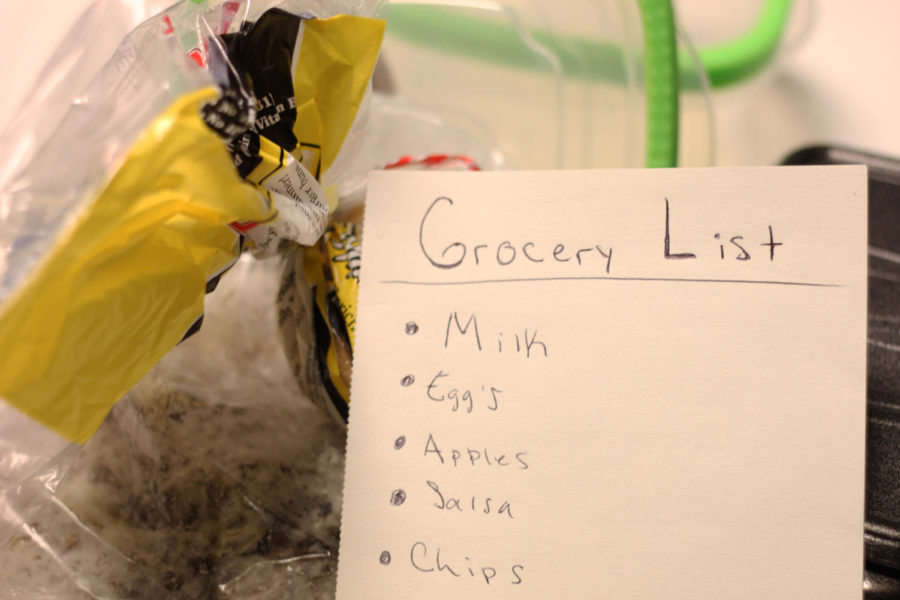Five food tips for students living off campus
Korrie Bysted/Iowa State Daily
Students use lists for shopping to help stay on track for their budget and needs versus wants.
January 13, 2015
The fridge doesn’t stock itself and fast food is sometimes too convenient — this is a lesson many students learn when living off campus for the first time.
Here are five tips to save money on food while living off campus:
1. Make a plan
The best way to make food choices cheap and healthy is to make a plan.
Plan everything about your food — when there is time to cook, if the meal will be for more than one person and what groceries are already available.
“The key is taking the time — whether it’s once a week or maybe every five — to dedicate to looking at your schedule,” said Lisa Nolting, dietician for ISU Dining. “See what nights you have time to cook and what nights you don’t. Most college students just don’t have enough time, so plan to make enough food to have leftovers.”
2. Grocery shop with a game plan
Make a grocery list of healthy and filling foods. The list should be ongoing as food is used up, that way nothing will be forgotten at the store. Then, when the time comes to go to the store, stick to the list.
Sabina Karamuja, intern for ISU Dining, said students should never shop when they are hungry or emotional. This can lead to impulse buys, which are often unhealthy.
Karamuja also recommended that students organize their grocery lists based on the store’s setup. A game plan will help students get in and out of the store quickly, while avoiding unnecessary foods.
3. Have the right utensils
Besides normal silverware, pots and pans, students should have other supplies on hand in their off-campus homes to make cooking more convenient.
Nolting recommends that students have a cutting board, knives, a strainer, baking dishes and a blender. Karamuja added that slow cookers could make cooking simple.
Students can look up recipes for slow cookers and blenders, making meal prep take almost zero time out of the day.
4. Be creative with leftovers
Instead of throwing away leftover chicken from a pasta dish, use it the next night for taco meat. Many meats, fruits and vegetables can be used in other meals and can be frozen after being cooked the first time.
Nolting specifically recommended that bad bananas be blended up and frozen. Later on, the blend can be added to create smoothies, bread or muffins.
5. Find healthy and convenient foods
Adding fruits and vegetables to a meal may seem complicated, but it can be very easy. Fruits and vegetables do not necessarily have to be fresh to provide nutritional value.
“Frozen, fresh and canned — nutritionally they’re all the same,” Karamuja said. “Canned can have more syrup or salt that may be included with the fruits and vegetables. They’re all really comparable in price. They are pennies away from each other.”
Look for store coupons on groceries, but avoid buying unhealthy food because of a sale.

















